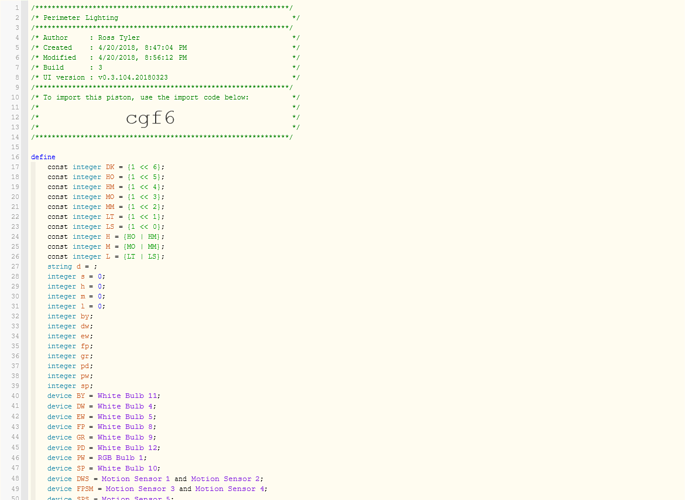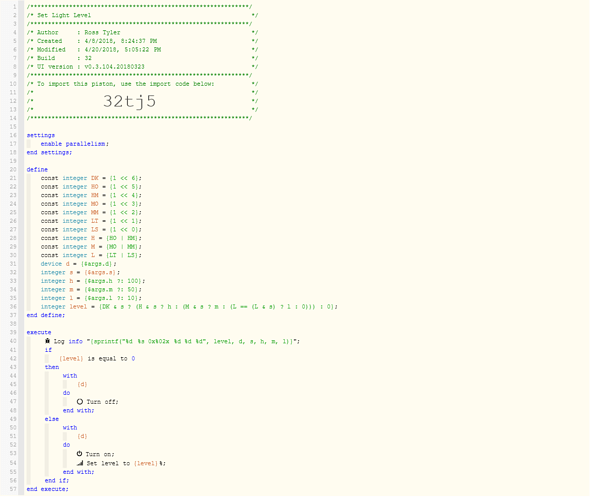I have a “Perimeter Lighting” piston that I have been incrementally growing by adding sensors and lights. Generally, I am very happy with what I have been able to do with WebCoRE. However, …
Several weeks ago, after adding a few more lines, I noticed that I could not successfully Save my editing session. I factored “Set Light Level” logic out into its own piston and this seemed to clear the problem up for a while. Unfortunately, as I continue to grow the “Perimeter Lighting” piston, I have reached the same impasse. I have had to remove the latest offensive addition.
I don’t know if it is related but this problem seems to have occurred when “Perimeter Lighting” has grown over 25 “chunks”. I have found that reducing name sizes and removing comments has helped but there is not much more that I can do on that front.
I have lost all logging capability in the webCoRE dashboard since my first experience with this issue.
“Perimeter Lighting” Quick Facts tells me
Subscriptions: 10 events, 8 controls
Devices used: 15
Memory used: 82% (82104 bytes)
Performing a “Test” of the “Perimeter Lighting” piston results in the following message in the ST IDE live log:
error physicalgraph.exception.StateCharacterLimitExceededException: State cannot be greater than 100000.0 characters @line 1291 (api_intf_dashboard_piston_test)
I have tried a “Clean up and rebuild data cache” operation from the WebCoRE SmartApp in the ST mobile app.
Pausing and resuming does not help.
It does not seem to me that I should be using much “state”. I have only 8 integer variables that, I think, would contribute to “state”. All other variables are initialized on each execution.




 in a closet…
in a closet… ). Borrowing your metaphor, it seems my team starts playing in a gym (54% memory used) and some time later find themselves in that closet (76% memory used). I thought I reserved the gym.
). Borrowing your metaphor, it seems my team starts playing in a gym (54% memory used) and some time later find themselves in that closet (76% memory used). I thought I reserved the gym.